13 foods high in iodine
Educational Program Health / / December 28, 2020
Why iodine is needed
Iodine is very important for normal functioning. However, the body cannot produce it on its own, which means that you must get this element from your diet.
The thyroid gland needsIodine deficiency, The epidemiology of thyroid disease in it for the production of hormones necessary for the regulation of metabolism, growth and development of the body, brain function and maintaining a stable body temperature.
The recommended daily intake of iodine for most adults isDietary Reference Intakes (DRIs): Recommended Dietary Allowances and Adequate Intakes, Vitamins 150 mcg per day. Pregnant or lactating women need even more - 220 mcg.
Iodine deficiency leadsIodine deficiency, The epidemiology of thyroid disease, Thyroid Hormone Regulation of Metabolism swelling of the thyroid gland (the so-called goiter), hypothyroidism, constant fatigue, dysfunctions of the cardiovascular system and the brain, miscarriages in pregnant women and depression. We figure out what foods should be eaten to avoid this.
Reading now🔥
- How to make a hand sanitizer that definitely works
What foods contain the most iodine
1. Kombu
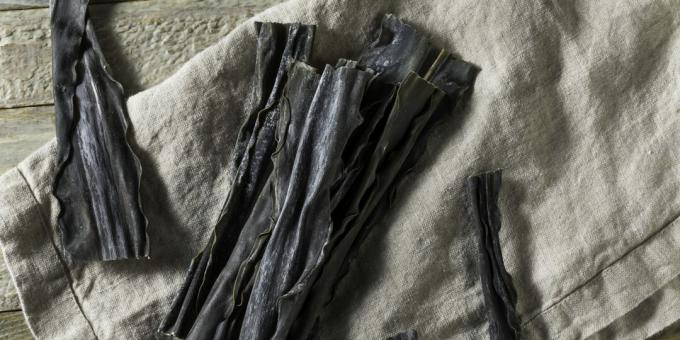
Kombu is a brown seaweed that can be purchased dried or in fine powder form. They are often used in Japanese cuisine, for example in a traditional broth called dashi.
Algae are generally rich in iodine, and kombu in particular. According to research, 100 g of kombu containsAnalysis of iodine content in seaweed by GC ‑ ECD and estimation of iodine intake, Iodine up to 298.4 mg of iodine. And this exceeds the recommended daily allowance (150 mcgConsequences of excess iodine) by 1 989 times!
2. Wakame
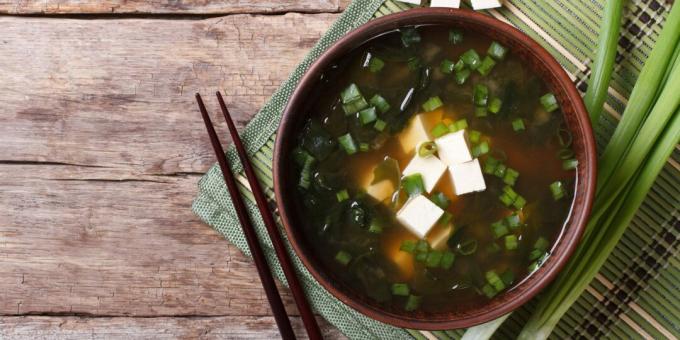
Wakame, she is also pinnate undaria, or miyok, is another type of brown algae, slightly sweet in taste. The Japanese make miso with them, a traditional fermented pasta made from beans, rice and wheat.
The average amount of iodine in 100 g of wakame isVariability of iodine content in common commercially available edible seaweeds 6.6 mg is 44 times the recommended daily intake. However, the content of this element dependsVariability of iodine content in common commercially available edible seaweeds from where the algae were grown. For example, wakame from Asia contain more iodine than algae from Australia and New Zealand.
3. Nori
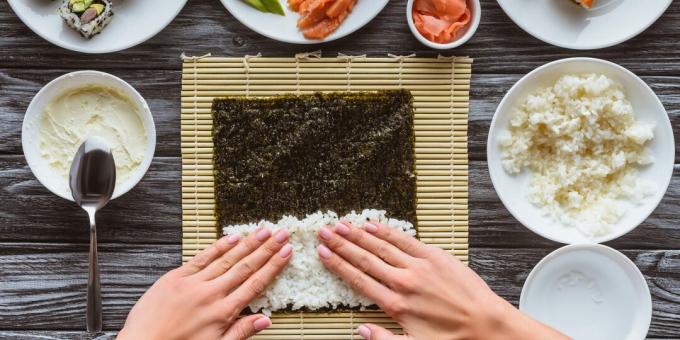
Nori is a type of red algae. They are usually used in sushi rolls. But, unlike brown algae, nori contains much less iodine: 100 g containsVariability of iodine content in common commercially available edible seaweeds, Assessment of Japanese iodine intake based on seaweed consumption in Japan: A literature-based analysis 1.6 to 4.3 mg of this element. However, this is still almost 29 times the daily value.
4. Cod
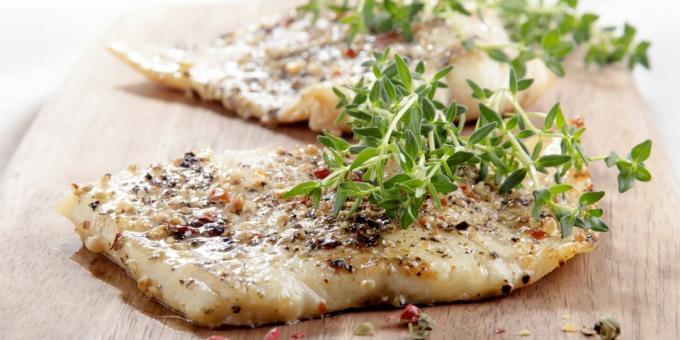
Cod containsSources of Iodine relatively few calories, but it contains a large amount of different minerals and nutrients, including iodine. And moreIodine intake and status in Iceland through a period of 60 years all in lean fish.
So, 100 g of cod containSources of Iodine, Iodine intake and status in Iceland through a period of 60 years approximately 170 mcg of iodine, or 113% of the RDA. The amount of element in fish may vary slightlyIodine intake and status in Iceland through a period of 60 years, Comprehensive Handbook of Iodine: Wild-caught fish have slightly more iodine than farm-raised fish.
5. Milk
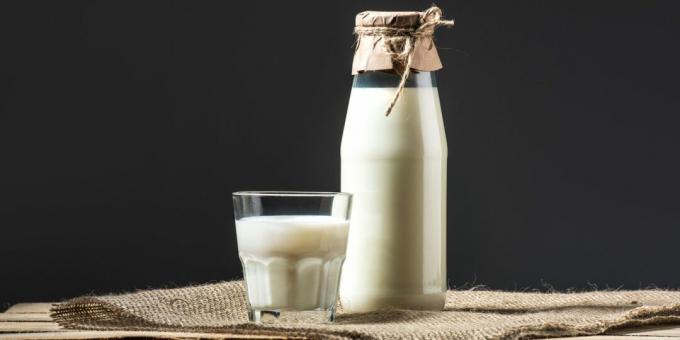
For most people who are not fond of seafood, milk is the mainIodine Deficiency source of iodine. True, its amount in this drink dependsIodine concentration in Norwegian milk and dairy products from the livestock diet. On average, 100 g of milk containsSources of dietary iodine: bread, cows ’milk, and infant formula in the Boston area from 44 to 84 mcg of iodine, that is, 30–56% of the recommended daily amount.
6. Yogurt
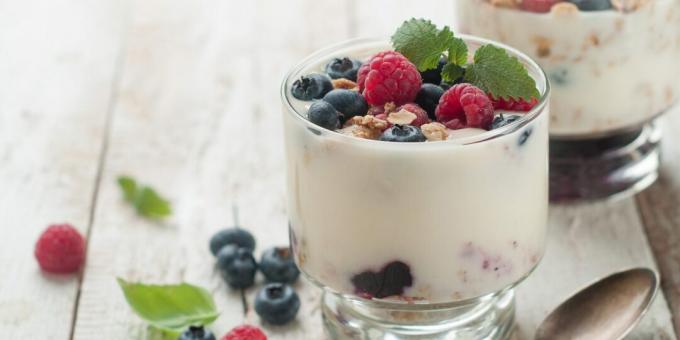
Not only milk can saturate you with iodine, but also products from it. For example, 100 g of plain yogurt containsSources of Iodine 37.5 mcg of iodine, or approximately 25% of the RDA.
7. Cottage cheese
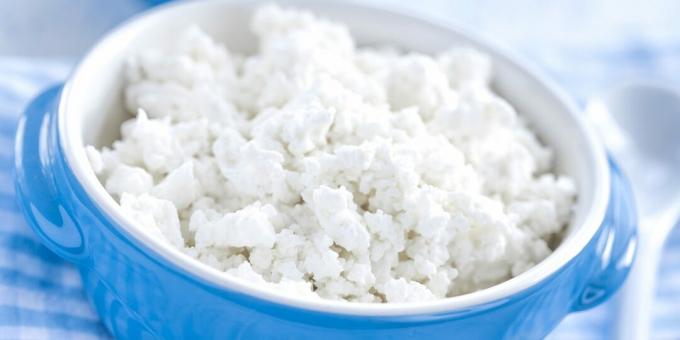
Curd is also a good source of iodine. 100 g of this product containsIodine in Food 26 mcg of iodine, which is about 17% of the RDA. In addition, cottage cheese hasCharacterization of cottage cheese using Weissella cibaria D30: Physicochemical, antioxidant, and antilisterial properties antioxidant properties and it is quite nutritious: experiments showThe satiating effects of eggs or cottage cheese are similar in healthy subjects despite differences in postprandial kineticsthat a bowl of cottage cheese in the morning saturates no worse than a serving of omelet.
8. Cheese

Almost all types cheese quite rich in iodine, but most of all in cheddar and mozzarella. So, 100 g of cheddar containsSources of Iodine about 40 mcg of iodine, that is, 27% of the daily value.
9. Iodized salt
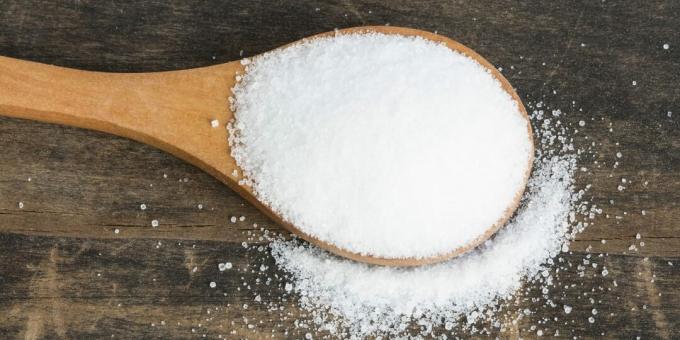
100 g of iodized salt containsThe History of Food Fortification in the United States: Its Relevance for Current Fortification Efforts in Developing Countries, Sources of Iodine, Shaking the Salt Habit to Lower High Blood Pressure about 4,733 mcg of iodine. However, a day is recommendedDietary Guidelines, Use the Nutrition Facts Label to Reduce Your Intake of Sodium in Your Diet consume no more than one teaspoon (2,300 mg) of this product - it contains 109 mcg of iodine, or 73% of the daily value.
However, salt also contains sodium, which is not very healthy. However, studies show that it is unlikely to hurt you if you do not suffer from elevatedThe History of Food Fortification in the United States: Its Relevance for Current Fortification Efforts in Developing Countries, Detecting sodium ‑ sensitivity in hypertensive patients: information from 24 ‑ hour ambulatory blood pressure monitoring pressure.
10. Shrimp
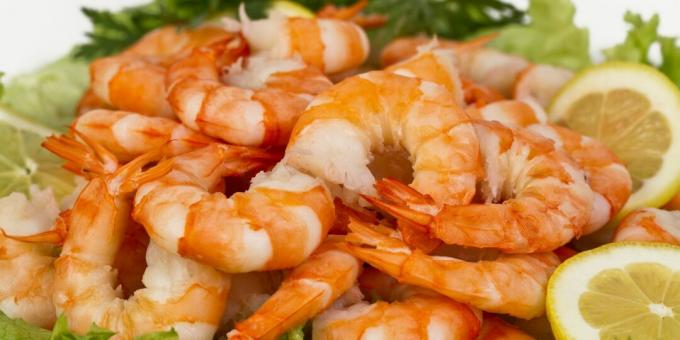
Shrimp is a low-calorie, protein-rich seafood that also servesSources of Iodine a good source of iodine. 100 g of shrimp containsSources of Iodine about 41 mcg of this element - that is, 27% of the recommended daily intake. In addition, they also containSeafood: nutritional benefits and risk aspects nutrients such as vitamin B12, selenium, and phosphorus, which are essential for proper thyroid and brain function.
11. Tuna
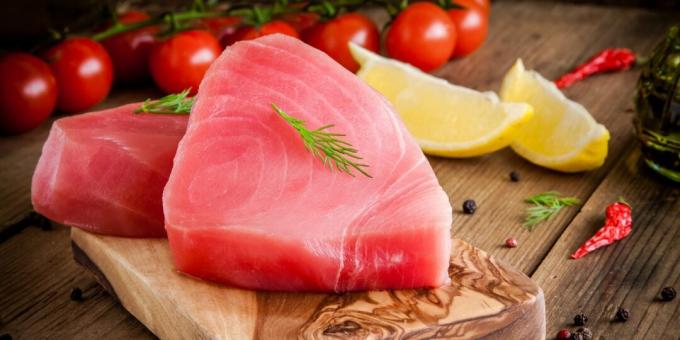
Tuna has few calories, but a lotFish, tuna, light, canned in water, drained solids Nutrition Facts & Calories iodine, protein, potassium, iron and B vitamins. In addition, this fish is high in fatty acids. omega-3, which canOmega ‑ 3 Fatty Acids and Cardiovascular Disease: Are There Benefits? reduce the risk of heart disease.
Since tuna is a fatty fish, it contains less iodine.Iodine intake and status in Iceland through a period of 60 yearsthan in the same crackle. But still, a 100-gram portion of this fish containsSources of Iodine 20 mcg of iodine is 13% of the recommended daily amount.
12. Eggs
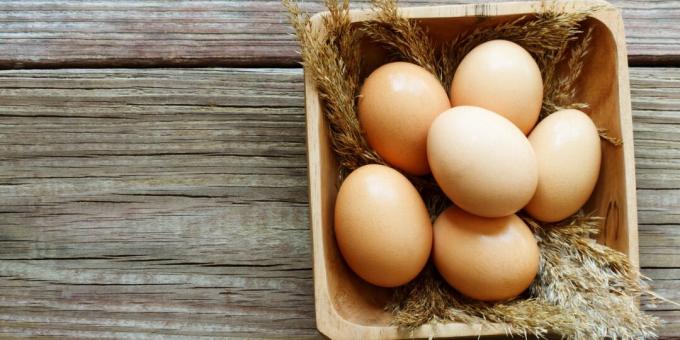
One egg contains only about 100 calories, but is richEgg, whole, raw, fresh protein, healthy fats, vitamins and minerals, including iodine. True, most of these substances areInvestigation of iodine bioavailability from chicken eggs versus iodized kitchen salt with in vitro method in the yolks. The iodine content depends on the diet of the chickens, but on average, one egg containsSources of Iodine, Iodine Deficiency, Investigation of iodine bioavailability from chicken eggs versus iodized kitchen salt with in vitro method 24 mcg of this element, or 16% of the daily value.
13. Potatoes
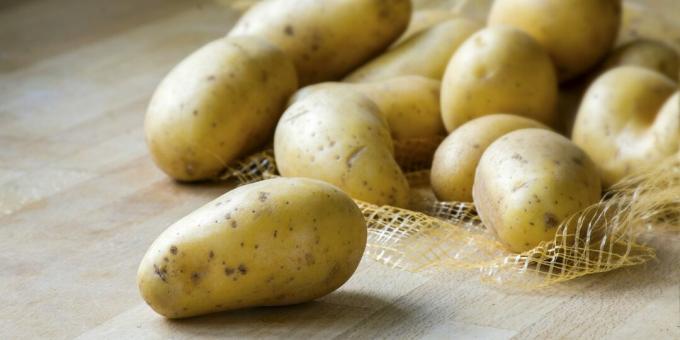
This vegetable is a good source of iodine. So, one baked potato weighing 100 g will provideIodine take 60 mcg of this element. This means that to get the daily allowance, it is enough to eat 3-4 potatoes. True, it is the baked vegetable that should be eaten, and with the skin, because it is in it that most of the nutrients are contained.
Please note: Exceeding the recommended dose of iodine can lead to thyroid dysfunction in some overly susceptible people, so consult your doctor before consuming algae in bundles.
Read also🥦🧑⚕️🥛
- How to recognize a vitamin D deficiency and what to do about it
- 10 foods with more iron than anywhere else
- 8 foods that have more vitamin A than carrots
- 8 foods that contain even more B vitamins than yeast
- 8 foods that provide vitamin D better than the sun



